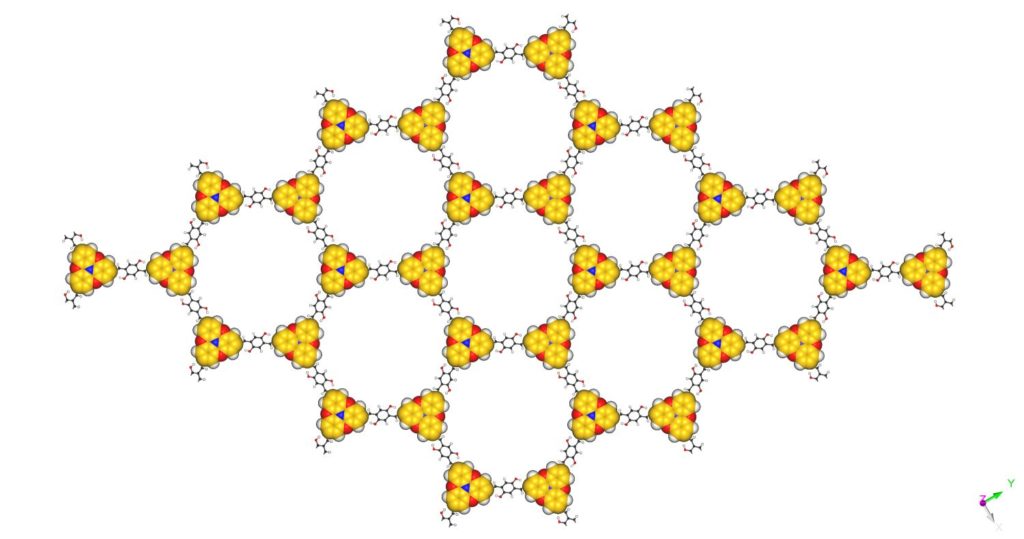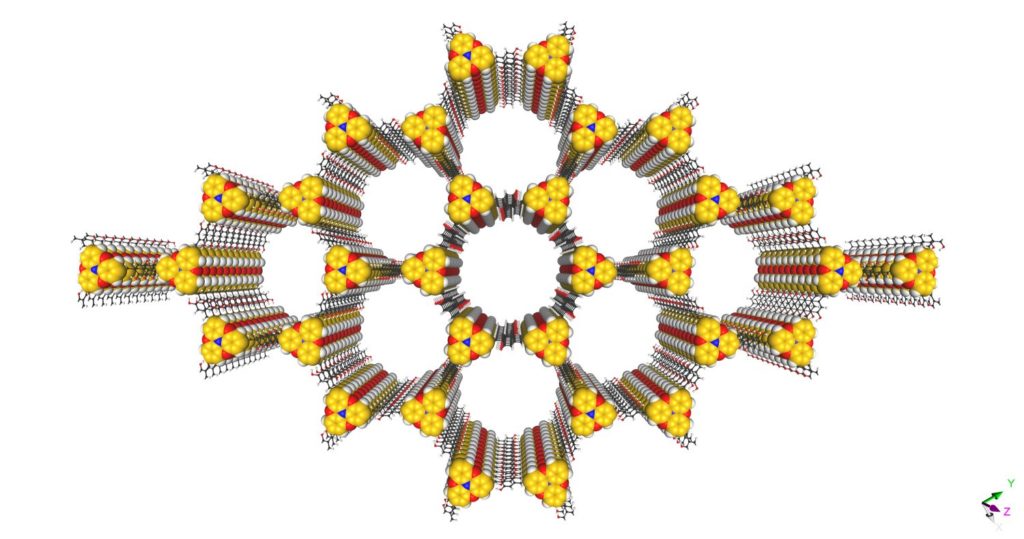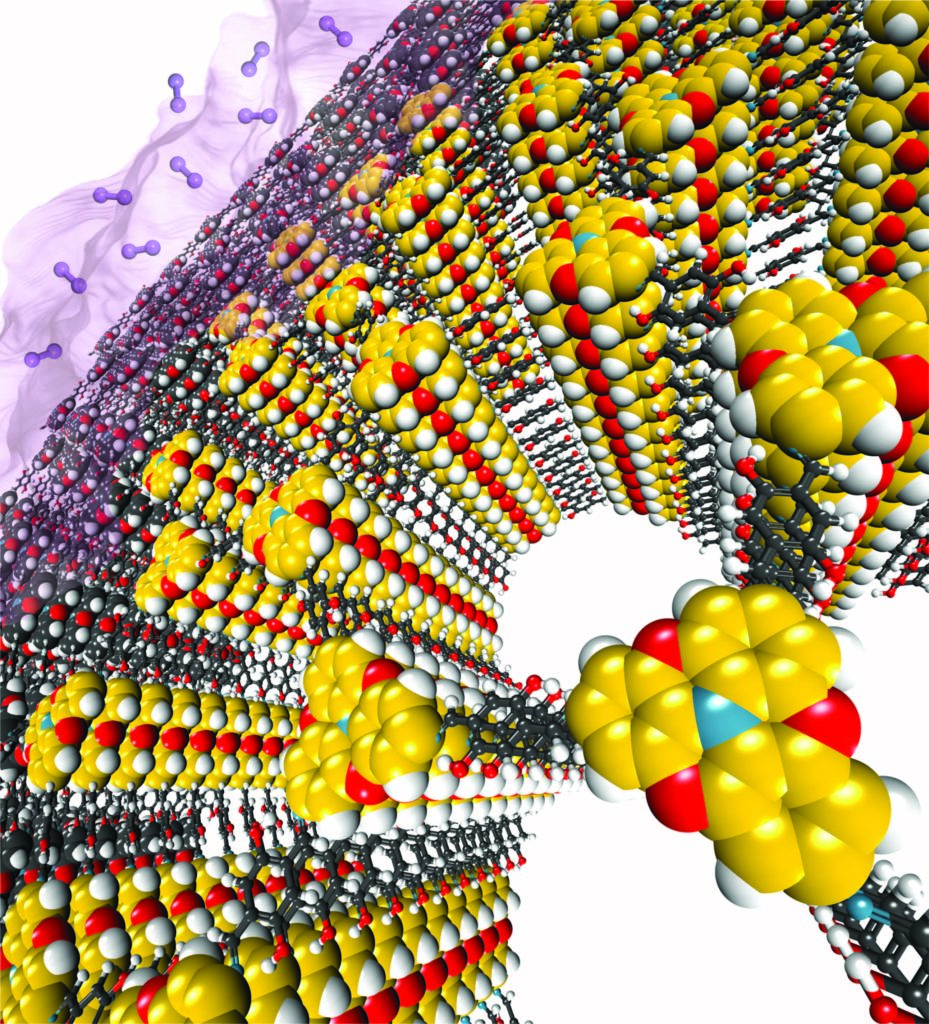New single-layer 2D Covalent Organic Framework discovered: TANG-COF
The discovery of ballistic charge transport in graphene ignited the quest for two-dimensional (2D) materials and they are now used in various applications, such as electronics and materials science. In particular, 2D π-conjugated covalent organic frameworks (COFs) received much attention due to their wide structural tunability, large surface area, and numerous associated properties.

The Perepichka group at McGill University designed a new π-conjugated COF based on trioxaazatriangulene (TANG) – a highly electron-rich and rigid building block of triangular symmetry. The COF was synthesized as a black crystalline powder via dynamic polycondensation reaction of in-situ prepared triaminated TANG with dihydroxyterephthalic aldehyde. The optical and electrochemical measurements of the COF reveal a bandgap of ~1.2 eV. The COF can be readily doped with iodine resulting in a dramatic reduction of the band-gap (<0.2 eV), intrinsic conductivity (0.01 S/cm), and paramagnetic behavior down to 20K.

DFT calculations using AMS-BAND module have helped develop a symmetry constraint and determine the layering structure of TANG. Additional DFT calculations predicts an anisotropic charge transport brought about by π-stacking of 2D covalent TANG networks. Indeed, while individual 2D polymer layers feature a large bandgap (1.81 eV) and a little dispersion in HOCO (0.28 eV) and LUCO (~0 eV), their stacking results in a much narrower bandgap (0.80 eV) and significant band dispersion along the π-stacking direction (0.95 eV for HOCO). The experimental measurements in anisotropically compressed COF pellets confirmed these DFT predictions.

Lakshmi, V.; Liu, C. H.; Rajeswara Rao, M.; Chen, Y.; Fang, Y.; Dadvand, A.; Hamzehpoor, E.; Sakai-Otsuka, Y.; Stein, R. S.; Perepichka, D. F. A Two-Dimensional Poly(azatriangulene) Covalent Organic Framework with Semiconducting and Paramagnetic States. J. Am. Chem. Soc. 2020, 142, 2155–2160.
Key conceptsADF BAND materials science organic electronics semiconductors